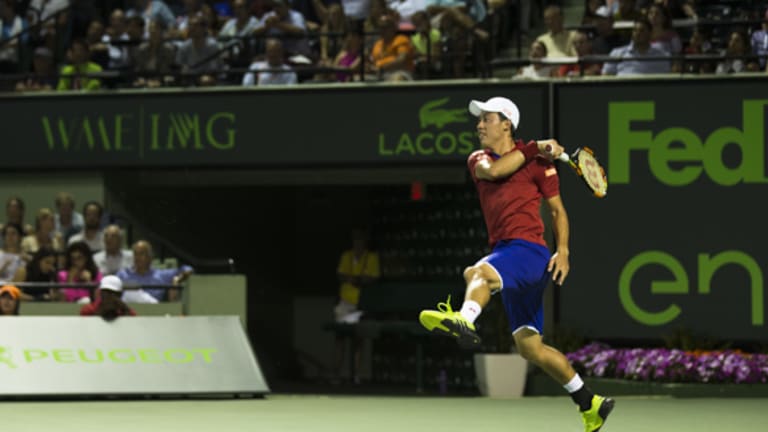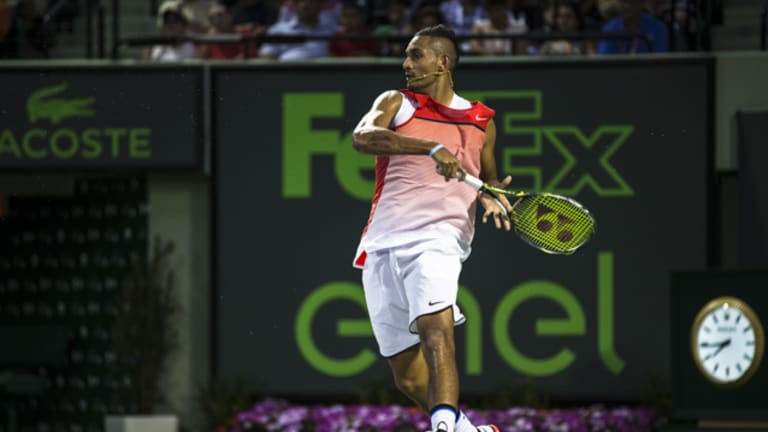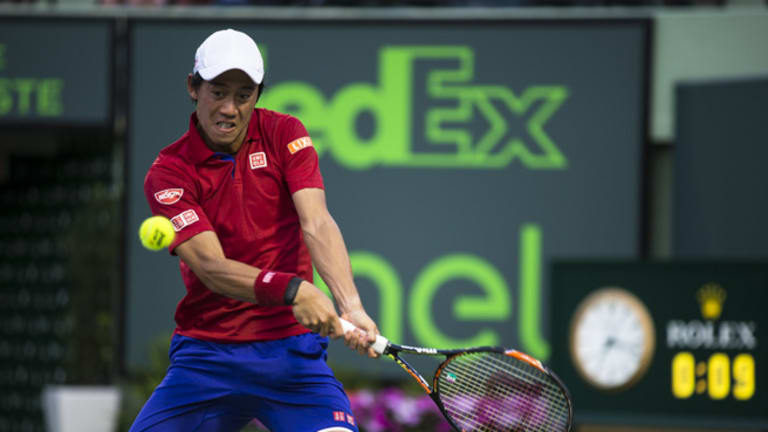KEY BISCAYNE, Fla.—The expectations were that Nick Kyrgios would be the center of attention on Friday night when he faced Kei Nishikori for a spot in the Miami Open final. ESPN was so high on his showman’s skills—as well as his penchant for viral-worthy controversy—that it handed the 20-year-old Aussie its primetime 7:00 P.M. slot for the second straight night, and left No. 1 Novak Djokovic to labor through the heat of the afternoon.
After a slow start, Kyrgios did his best to live up to those exceedingly high—or exceedingly low, depending on your point of view—expectations. He was the one who hit the gasp-inducing 135-m.p.h. serves, and twirled his racquet above his head before sending a viciously hooking forehand into the corner for a winner. Kyrgios was also, of course, the one who yelled “towel!” in the direction of an unsuspecting ball girl, jawed with chair umpire Fergus Murphy and barked complaints in the direction of his player box. And as he had all week, he was the one who lit a fire in the capacity crowd when he nearly came from a break down to steal the second set.
On this night, though, it was Nishikori, his clinical game, and by extension the old-fashioned sport of tennis, that ended up being the star attractions. It was a big evening for the world No. 6. He was trying, after nine years on tour, to do something that he had done just once before, and something that many of us have been waiting for him to do for a long time: reach his second Masters final. With Andy Murray, Rafael Nadal, Roger Federer and Stan Wawrinka all long gone from Crandon Park, he was likely never going to have a better opportunity.


